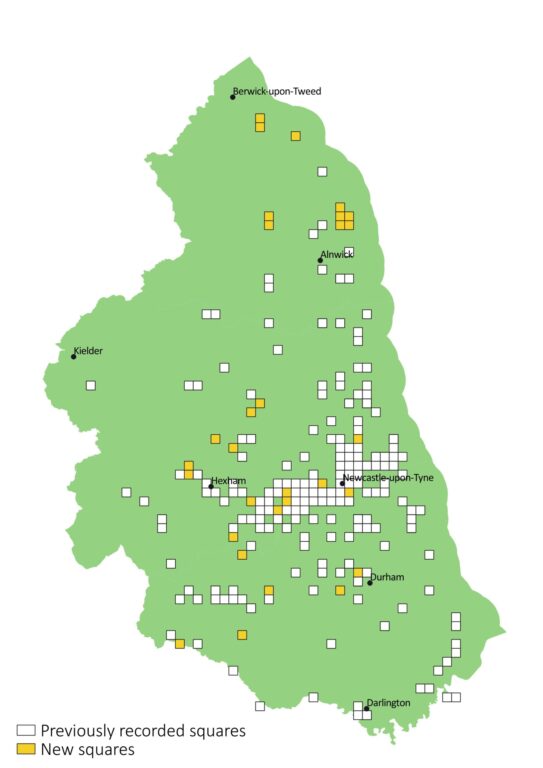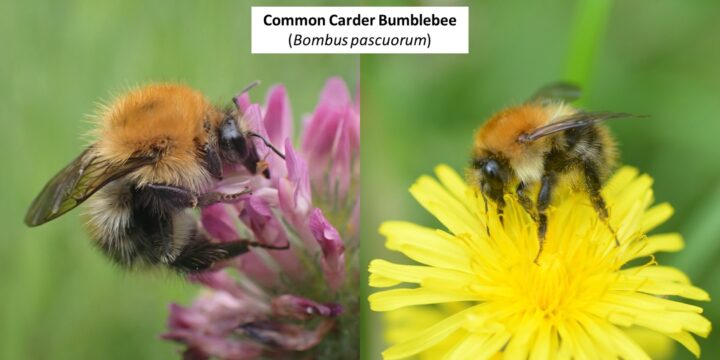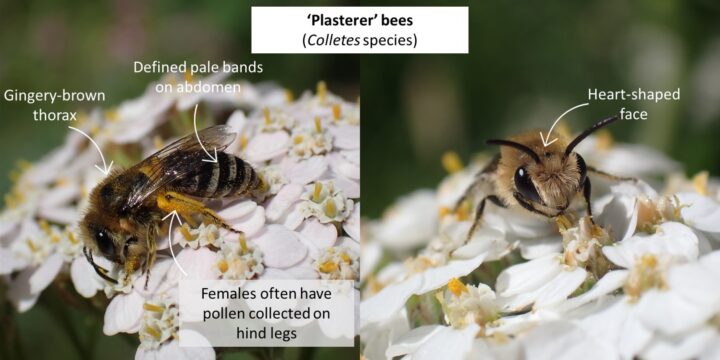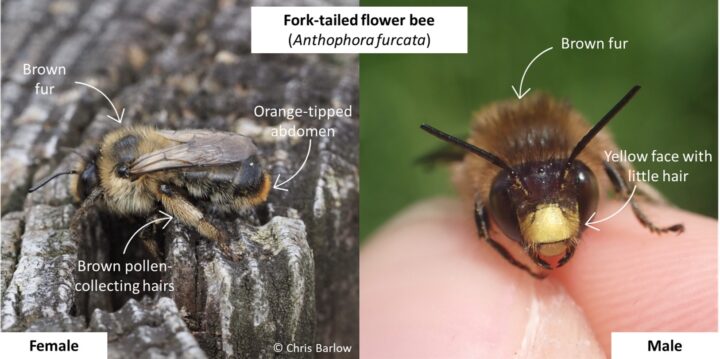Thank you again to everyone who has taken part in the North East Bee Hunt. Your records are bringing to light new information about the North East’s bees and have now taken us to an outstanding 1600 records!
Beginner or expert, everyone can take part in the North East Bee Hunt. If you’re unsure about how to submit your records, a guide to using iRecord can be found here. If you are unsure which bee you have seen, please get in touch with us on social media or by email at nhsn@ncl.ac.uk – we’ll try our best to help.
Below, Charlotte Rankin highlights your records and observations over the past fortnight
There are still gaps that can be plugged in our knowledge of bee distributions across the North East. Please take a look at this interactive map and help us fill any gaps present in your area.
Over 250 records have been submitted this fortnight, bringing the total so far to an incredible 1600 records from 157 recorders across the region. This fortnight, new bee recorders and those venturing further afield have helped to further plug the gaps in our knowledge of bee distributions in the region. The map shows the distribution of records across the region so far, with orange squares showing new areas for record this fortnight. Can we generate more records south of the Tyne or in North Northumberland this fortnight?

To date, the top ‘5’ most recorded bees are the Tree Bumblebee (Bombus hypnorum), Red-tailed Bumblebee (Bombus lapidarius), Common Carder Bumblebee (Bombus pascuorum), Early Bumblebee (Bombus pratorum) and Buff-tailed bumblebee (Bombus terrestris) with Garden Bumblebee (Bombus hortorum) just a few records behind. Encouraging sightings of all wild bees, a total of 31 species have been confirmed so far. All records are checked and verified by experts on iRecord and made available to inform monitoring and conservation efforts.
By putting bees on the region’s map, we can build a greater understanding of where bees are and how they are faring in the region. Here are three bees you can look out for this fortnight.
What to look out for this fortnight
Common Carder Bumblebee (Bombus pascuorum)
This bumblebee has an overall gingery and ‘teddy bear’ appearance with varying extents of black hairs on the abdomen. Due to the varying amounts of black hair, this species can be confused with the Tree Bumblebee (Bombus hypnorum) from some angles. However, Common Carders do not have a white tail. A long-tongued species, this bumblebee is particularly fond of tubular flowers such as those of the legume (Fabaceae) and dead-nettle (Lamiaceae) family. Nests are found in dense vegetation with moss and dried grass used as nesting material.

‘Plasterer’ bees (Colletes species)
Plasterer bees are so-called due to their craft of secreting cellophane-like material to line their nests, a material that is both waterproof and fungus-resistant. Small with distinctively cream-striped abdomens, these bees can be found on open flowers such as those of the daisy (Asteraceae) family. You will often see males zipping around patches of flowers in of . These bees are just appearing on the wing in the region so do keep a lookout!

Fork-tailed Flower Bee (Anthophora furcata)
Flower bees can be confused with bumblebees due to their plump appearance and densely-furred coats. However, a key difference is the high-pitched buzzing and zippy flight behaviour that contrasts with the bumbling nature of bumblebees. The Fork-tailed Flower Bee is on the wing now and is most likely to be seen visiting plants of the dead-nettle (Lamiaceae) family such as Hedge Woundwort and garden Salvias. Read more about this species and its identification.

A huge thank you to all Bee Hunt participants who are sharing and submitting their bee sightings. If you have sighted a bee and are unsure on its identification, try this bumblebee crib sheet by the Bumblebee Conservation Trust and the online photo guide by leading bee expert Steven Falk. Please do also get in contact with us via nhsn@ncl.ac.uk or social media, and the NHSN Bee Team will try their best to help. Collectively, we can build a greater understanding of where bees are and how they are doing in the region.
By Charlotte Rankin, local naturalist